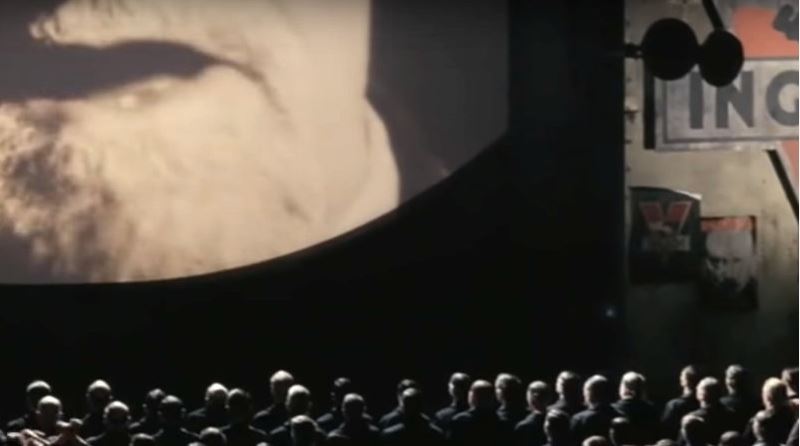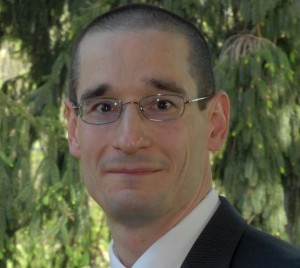Two Minutes Love


Readers might be familiar with the “Two Minutes Hate.” It’s an idea from George Orwell’s novel 1984, a two-minute ritual in Orwell’s fictitious society, Oceania. The ritual involved the mandated viewing of programs projected onto large telescreens, with no religious or medical exemptions.
The programs were called the “Two Minutes Hate” because they featured objects of hate. They encouraged the masses to express their discontent toward persons which the Party ruling Oceania has pre-approved as official objects of scorn. These persons were skeptics of the Party’s official narratives, deviationists from the Party’s teachings. The narrator explains that Goldstein is the principal figure of the Two Minutes Hate.
“The programmes of the Two Minutes Hate varied from day to day, but there was none in which Goldstein was not the principal figure. He was the primal traitor, the earliest defiler of the Party’s purity. All subsequent crimes against the Party, all treacheries, acts of sabotage, heresies, deviations, sprang directly out of his teaching.”
The Two Minutes Hate was obviously a form of mass manipulation. The Party used the program to access feelings of discontent among the masses, feelings for which the Party itself was often responsible. The programs manipulated those feelings by directing (and dissipating) them toward pre-approved objects for malice and mockery. In this way, the programs disciplined the masses, turning disaffection into expressions of hate-filled obeisance. As the novel explains, “the speculations which might possibly induce a skeptical or rebellious attitude are killed in advance by his early acquired inner discipline.”
We’ve experienced Two Minutes Hate programming in our own time. Our telescreens are social media platforms. They direct our reproach and ridicule toward the thought crimes and felonies of the “deniers” who live amongst us.
Radicals took control of the French Revolution in 1792. They declared the restarting of history by marking the commencement of their reign as year 1. This was a statement against civilization, against all accrued institutional, social, and cultural knowledge. The directors of the Two Minutes Hate programs in our time have likewise wielded their swords against civilization. There was no accrued scientific literature showing the efficacy of lockdowns. There was no accrued scientific literature showing the efficacy of experimental gene therapies. There was no accrued scientific literature showing the efficacy of social distancing, masks, etc. The directors of our Two Minutes Hate programs took the Great Leap into the abyss of year 1 by rejecting the very idea of accrued knowledge in favor of completely novel imaginings, like hoping for twice the yield by planting seeds twice as deep. In the process, they cultivated and channeled our ire toward the “deniers” of Science who traitorously pursued fresh air in public parks and aspired to unobstructed breathing.
This is all obviously very troubling. Yet so, too, is a related phenomenon which has come to the fore in recent years. We might call this the Two Minutes Love.
For two decades, the public facing figures of Big Tech have been hawking their wares as a means of generating new forms of human connectivity, enhancing our well-being by facilitating community formation. We are in “constant contact,” one platform proclaims, members of “teams” who “collaborate” across time and space, in the words of others. We share and exchange. We troubleshoot and problem solve. We are connected with each other like never before.
Yet we are isolated in profound and deepening ways. We accuse, scapegoat, and ostracize while proclaiming our rejection of hate. Our “teams” often compete in what Jeremy Weissman calls “The Crowdsourced Panopticon,” surveilling each other for micro-breaches of civilized social order. More screen time, more depression, more alienation, a greater sense of being thrown into a world, a society, a body not of our own choosing.
One yield of the two-decades reign of Big Tech was one of the pandemic’s most curious of phrases – “social distancing.” Big Tech aggressively promoted it, and handsomely profited from it. The ubiquity of the phrase partly obscured its complete unsuitability. As Aaron Kheriaty observes, the phrase derives from a social, not medical lexicon. It’s less a tool for public health than a vision for social organization – the inverse of human connectivity. It’s a model for what Kheriaty calls our “global non-society.”
Hence the administration of the Two Minutes Love. We’ve become so desperate for connectivity, so anxious for community, so desirous of positivity that we turned our telescreens on full blast after watching a young professional athlete suffer cardiac arrest live on Monday Night Football. Few of us had previously known his name. Yet we hungrily joined a mass outpouring of Two Minutes Love which, like an old tent revival, lasted for days. Sweatshirts, hats, and jerseys; signs, flags, and emblems – all bursting with love for someone who departed from public view. Vague but affirming bulletins on the condition of our anti-Goldstein continued our fervor.
Rather than “the horrible thing about the Two Minutes Hate,” we might say that the curious thing about the Two Minutes Love, in Orwell’s words, “was not that one was obliged to act a part, but, on the contrary, that it was impossible to avoid joining in.” An intense excitation “seemed to flow through the whole group of people like an electric current.” And therein lies our conundrum. For all across our land, beneath the surface, the Two Minutes Hate and the Two Minutes Love go hand in hand.
We already know this. We’ve already seen the underlying symmetry of these two-minute regimens. Love was the selected emotion evoked and channeled toward health care workers – the essential of the essential – when we needed feelings of connectivity and community during the first year of the pandemic. And then hate was the selected emotion evoked and channeled toward some of the same workers when we needed feelings of connectivity and community during the first year of the experimental gene therapy. There are to be “no respites from enthusiasm,” Orwell teaches.
The fate of the young athlete raises questions. But our Two Minutes Love forbade questions, as thousands eerily emoted their love with hand gestures mimicking the symbolic shape of the organ around which the forbidden questions revolve. Our Two Minutes Love was directed against the same deniers who’ve been the objects of our pandemic’s Two Minutes Hate. Goldstein, the primal traitor and defiler, is the original “anti-vaxxer.” Not so the chosen object of our current love, in our imagination, regardless of what the young man actually thinks.
We are a desperate people. Desperate for connectivity, community, and positivity. A desperate people is a vulnerable people. And a vulnerable people is a potentially angry people. Our latest Two Minutes Love preyed upon our desperation by creating feelings of inclusion based on our Two Minutes Hate of deniers.
What will happen, though, if more amongst us become like the protagonist in The Truman Show, realizing that the staged ocean and sky are not real, that the institutions and relationships once thought genuine are mere theater, a stage show for profit and power? What will happen if more amongst us begin to peer behind the scenes of our telescreens? We will then see the underlying symmetry of our two-minute regimens laid bare.
And that symmetry is not grounded in love. Telescreens never are. There are already signs of theatre hands trying to reserve their chairs for if, and when, the music stops.
Members of the regime are beginning to position themselves, trying to reserve their chairs while the music remains audible. Purported “news” stories are appearing as thinly veiled finger pointing exercises, statements of self-exoneration, as in this recent CNN headline: “FDA vaccine adviser ‘disappointed’ and ‘angry’ that early data about new Covid-19 booster shot wasn’t presented for review last year.” The early data, though, was not hidden from view, as Dr. Naomi Wolf has noted. It was published in the New England Journal of Medicine.
But the FDA advisors understand that a vulnerable people is a potentially angry people. And they well know that our two-minute regimens are not grounded in love. They fear more of us might become like Winston from 1984 (before his ultimate demise). For “Winston’s hatred was not turned against Goldstein at all, but, on the contrary, against Big Brother, the Party, and the Thought Police.”
Orwell’s thought continues: “and at such moments his heart went out to the lonely, derided heretic on the screen.”
That perchance is a way forward for us, a way we might begin the process of delivering our country from this darkness. When will our hearts go out to some of the most lonely and derided of all – the vax-injured and families of the vax-dead? That has to be our starting point. How or when that will happen, and what the process will look like when it begins are questions that remain unanswered. But of this, I’m confident: If, and when, that process begins, it won’t look anything like the related regimens of hate and love that have so conditioned our humanity for these last several years.
One of our country’s most important freedoms is that of free speech.
Agree with this essay? Disagree? Join the debate by writing to DailyClout HERE.





Goldstein was Jesus.
The book was The Bible.